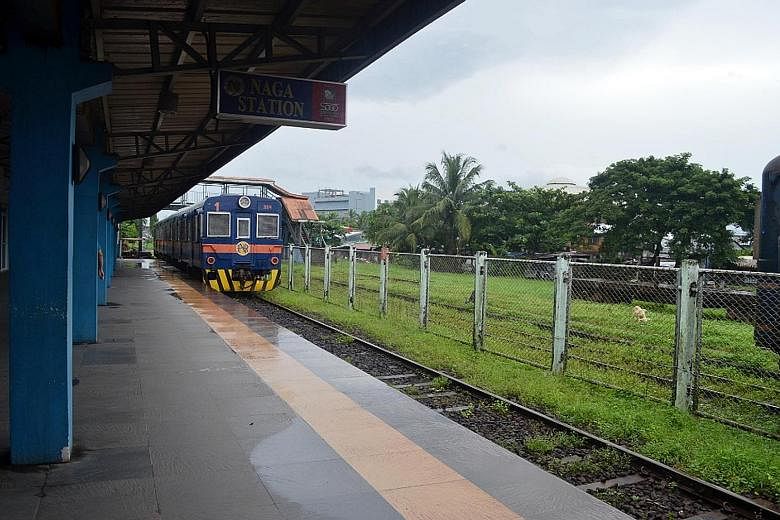The Philippines is set to start building late this year a 2,000km railway in the southern island group of Mindanao, in an infrastructure push seizing on President Rodrigo Duterte's warm relations with China and Japan.
"The feasibility study is about to be completed. It's likely to get started in terms of implementation this year because that is going to be an iconic project, a major project, and of course close to the heart of the President. So, we need to get that started this year," Economic Planning Secretary Ernesto Pernia told reporters this week.
The project will cost 121 billion pesos (S$3.4 billion). With two phases planned, according to Mr Pernia, it may not be completed before Mr Duterte steps down in 2022.
The railway will connect Mindanao's seven key cities, including Mr Duterte's home turf of Davao.
A decades-old Islamist secessionist war that left over 120,000 dead in its wake and rising Islamist extremism have stymied growth in Mindanao. The government is hoping that big-ticket projects will bring growth there that, in turn, will draw people away from violence, especially in far-flung areas like the Sulu archipelago.
Sulu is the bastion of the Abu Sayyaf, a small but brutal group of Islamist separatists who have turned to kidnapping and piracy, upsetting trade in waters separating Mindanao and Malaysia's Sabah state.
Mr Duterte has embarked on an ambitious US$160 billion (S$226 billion) infrastructure plan from this year to 2022 as he seeks to sustain growth of about 7 per cent, among the fastest in the world. His government is looking to build new airports, seaports, container terminals, highways, bridges, power plants, steel mills, floodways and bus rapid transits across the country.
-
Other major projects in Asia
-
Here is a list of big-ticket projects being lined up, as Asia's infrastructure race heats up:
Malaysia: Pushing ahead with new rail lines in Kuala Lumpur, a 2,000km Pan Borneo Highway connecting the states of Sabah and Sarawak with Brunei, as well as the West Coast Expressway.
Indonesia: Building an uninterrupted toll- road connection on the country's main islands and a 720km railway from Jakarta to Surabaya.
Vietnam: Raising funding for the US$2.16 billion (S$3.06 billion) Nha Trang-Phan Thiet expressway spanning 235km from Khanh Hoa province to Binh Thuan province in the central part of the country.
Thailand: Approved in December a US$25.2 billion budget for 36 infrastructure projects, covering rail, roads, air transport and ports.
India: Estimates that it needs more than US$1.5 trillion to meet its infrastructure needs over the next decade, as it undertakes a massive modernisation of decrepit railways and roads in the country. It also aims to link each of its 700,000 villages, offering more avenues for development of the hinterland that houses 70 per cent of its 1.3 billion population.SOURCE: ASIAN DEVELOPMENT BANK
Mr Duterte is hoping to leverage on his nation's growing rapprochement with China and Japan's eagerness to ante up to counteract Beijing's influence, to secure funding for his infrastructure spree.
Ties between the Philippines and China were strained under former president Benigno Aquino because of disputes over international waters in the South China Sea.
But since he took office in June last year, Mr Duterte has pivoted to China, at the expense of his nation's ties with its long-time ally, the United States. He has chafed at Washington's criticism of his controversial war on crime, and has looked at Beijing as a more open-minded partner.
Beijing has responded to this new rapprochement with over US$24 billion in investment and financing pledges secured during Mr Duterte's four-day state visit to China in October.
The Philippines has pitched for the Chinese funding a US$3 billion railway connecting metropolitan Manila to the southern part of the main island of Luzon and 39 other projects, including a dam.
Japan's Prime Minister Shinzo Abe, meanwhile, sought to woo the Philippines in January with a US$9 billion aid package.
Mr Duterte's infrastructure push is part of a race in Asia to build everything from transport networks to clean water by the end of 2030 to maintain growth, eradicate poverty and offset climate change.
The Asian Development Bank estimates the region will need as much as US$26 trillion for the projects.


